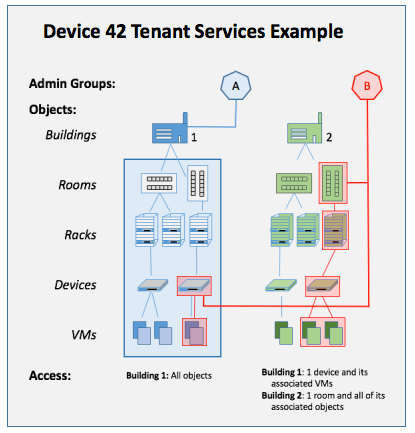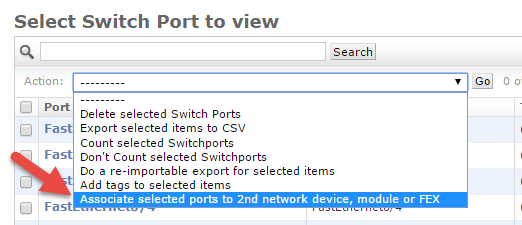We are very excited to announce general availablity of multitenancy feature in Device42. Details about this feature and all other changes in v9.0.0 are discussed below.
Multi-tenancy

[/responsive]
We have added object level and hierarchical multitenancy in Device42. You will be able to segregate Buildings/Rooms/Racks/Devices and Subnets/IPs using object level permissions. For example, you can assign what groups can see what specific devices or racks etc. These permissions are hierarchical as well. For example, if you assign permissions to a group to a building, the users in that group will have access to all the rooms, racks, devices in that building.
You can enable multi-tenancy in 64 bit appliance (only supported in 64 bit because of performance reasons) from Tools > Setting > Global Options. With that, you will see options to add admin groups to individual objects for restricted permissions.
For more details, please refer to the documentation here: https://docs.device42.com/multitenancy-overview/
Security fix for Weak Diffie-Hellman and the Logjam Attack
We have restricted the ssl-ciphers to address Weak Diffie-Hellman and the Logjam Attack.
Better handling for stacked switches or virtual chassis port assignments and layouts

[/responsive]
Given the SNMP data for a stacked switch or a virtual chassis based switch all the ports get assigned to the cluster device and not actual physical devices. We have added a bulk option now to associate with the 2nd network device (to physical device). Also, when you look at the physical layout for that switch – it will show those ports now.
API enhancements
- Create child subnet API call (/api/1.0/subnets/create_child/) now takes vrf_group (or vrf_group_id) and parent_mask_bits as optional parameters instead of parent_subnet_id. This way, you can find any available child subnet in any given VRF group.
New devices supported for auto-discovery
- Added QNAP device detection support
Bug Fixes
- Increased username, firstname, lastname to 254 characters. This was causing issues with LDAP sync if the username was too long.
- On a device chassis page, if there was a space or special character in device name, the blade tabs was not showing blades. Now fixed.
- IPMI auto-discovery was failing in 64 bit. Now fixed.
- oVirt discovery was failing in 64 bit appliance. Now fixed.



